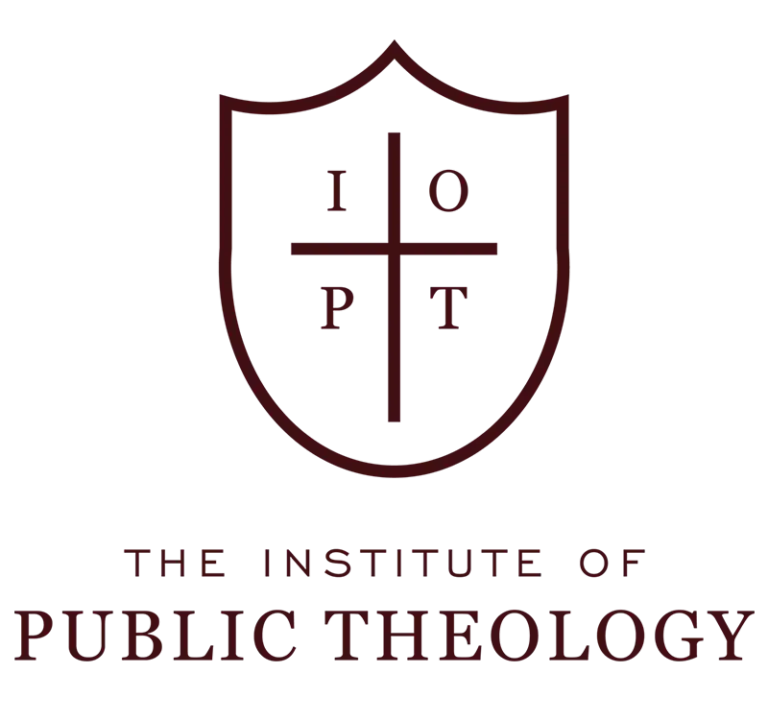Chapter eight of the Second London Confession of Faith 1689 (2LC) is titled, “Of Christ the Mediator.” Tom Nettles notes the importance of this chapter and its precise description of Christ the mediator by observing its “carefully crafted language [which] protected the unity of Christ’s person” and the 2LC “claims this important teaching as fundamental to Baptist life.”1 Nettles’ praise is not an overstatement. Just a brief glance into church history reveals a vast array of Christological heresies that have challenged the church’s witness. Every generation must remain vigilant in its quest to stifle any teaching subverting the biblical portrait of our Lord, and chapter eight of the 2LC provides the church with a framework from which to mount a substantive defense. In fact, this crucial chapter establishes necessary truths that buttress a confessional framework of a biblical Christology. Denial of the doctrinal statements in this chapter could portend a perilous fate.
In his exposition of the 2LC, Samuel Waldron divides chapter eight into two main sections. Perhaps there are other helpful ways to convey the emphases of this chapter, but Waldron serves us well in his observations. He treats paragraphs one through three individually, and paragraphs four through ten as one unit. Paragraph one distinguishes Jesus’ ordination to the office of mediator, paragraph two describes His incarnation for the office of mediator, and paragraph three summarizes the specific qualifications necessary for the office of mediator.
Waldron acknowledges the close similarity of this chapter in the 2LC with the Westminster Confession of Faith (WCF). In fact, the 2LC is nearly identical in its first eight paragraphs with the WCF, but the last two paragraphs in this chapter are “an expansion of the First London Confession by the authors of the 1689 confession.”2 The two additional paragraphs focus on Jesus’ exclusivity in His role as prophet, priest, and king, and the impossibility of any bifurcation of these roles to another. Christ alone is the mediator, and He does not share this role with another. The final paragraph beautifully summarizes the eschatological hope believers share through Christ’s work on their behalf by connecting it to the heavenly kingdom. This article explains chapter eight, paragraphs one through three, of the 2LC, which focuses on Christ’s role as mediator. The text of 2LBC, chapter eight, paragraph one reads as follows:
It pleased God, in His eternal purpose, to choose and ordain the Lord Jesus, His only begotten Son, according to the covenant made between them both, to be the mediator between God and man;(1) the prophet,(2) priest,(3) and king;(4) head and savior of the church,(5) the heir of all things,(6) and judge of the world;(7) unto whom He did from all eternity give a people to be His seed and to be by Him in time redeemed, called, justified, sanctified, and glorified.(8)
(1) Isaiah 42:1; 1 Peter 1:19,20. (2) Acts 3:22. (3) Hebrews 5:5, 6. (4) Psalm 2:6; Luke 1:33. (5) Ephesians 1:22, 23. (6) Hebrews 1:2. (7) Acts 17:31. (8) Isaiah 53:10; John 17:6; Romans 8:30.
The Pleasure of God in the Ordination of Christ the Mediator
Paragraph one summarizes God’s pleasure displayed in His sovereign purposes of ordaining the Lord Jesus as man’s only mediator. God’s purposes are always doxological, meaning God is concerned with and committed to his glory and renown. Thus, this paragraph begins with the stunning admission of this great truth, “It pleased God” to act. Human motivations to act on behalf of others are often plagued by self-interest and convenience. Stated simply, humanity cannot boast of selfless virtues apart from saving grace. This striking admission of God’s pleasure in His work serves as a reminder of a common refrain in sacred Scripture. God is “in the Heavens; he does all that he pleases” (Psalm 115:3), and “whatever the LORD pleases, he does, in heaven and on earth, in the seas and all deeps” (Psalm 135:6). It is impossible to read Psalm 135 (and many other biblical texts) and miss the sheer fact that God is great, and He does what He pleases in heaven and on earth.
Jesus’ role as mediator between God and man was not the result of random chance or unforeseen circumstances. Or stated differently, Christ the mediator was not plan B or a rushed attempt on God’s behalf to remedy man’s unforeseen fall. A mediator intervenes between two parties in opposition to influence reconciliation or peace. Regarding Jesus’ role as mediator, His work of reconciliation was due to His being “foreknown before the foundation of the world but was made manifest in the last times for the sake of you” (1 Peter 1:20). Jesus’ entire redemptive work must be viewed as an eternal one stretching beyond the limitations of human conceptions of time. Certainly, Jesus saves sinners through the Spirit’s regenerating work whereby sinners hear the word of truth and the gospel of salvation, and upon hearing and believing, they are sealed and secure (Ephesians 1:13). Or as the 2LC notes, “in time” Jesus redeems, calls, justifies, sanctifies, and glorifies His seed. Yet this life-altering salvation encompasses eternity because the triune God determined to magnify His great name through the salvation of His people before the world began.
Paragraph one of chapter eight of the 2LC affirms Jesus as being the “only begotten son according to the covenant that was made.” Recall here Tom Nettles’ helpful work in the Summer 2016 edition of Founders Journal for an in depth look at how the 2LC speaks of Jesus being the “eternally begotten of the Father.”3 Contemporary debates regarding eternal generation linger throughout many discussions of theology proper these days, but the 2LC’s affirmation remains valid. It is God’s only begotten Son who is the sole qualified and ordained mediator.
Jesus Christ as Prophet, Priest, and King
The 2LC carefully notes Jesus’ mediating role is not merely an idea that is sequestered to the New Testament. Christ the mediator serves not as a fancy of a wild-haired apostle with a creative imagination. Rather, the 2LC aptly describes the biblical evidence of both testaments. Christ as mediator between God and man seems deeply rooted in the Old Testament roles of prophet, priest, and king, and Jesus’ fulfillment of these roles is due to the covenant made between God the Father and God the Son. In the Old Testament, mediators were selected individually among the people of Israel, but their role foreshadowed what was to come. As Graeme Goldsworthy notes, “one of the messages of the New Testament, and especially of the letter to the Hebrews, is that human, sinful mediators foreshadow the true mediator, but they do not themselves mediate saving grace.”4 Jesus, the true mediator, stands between God and His rebellious, alienated image bearers to mediate saving grace upon His elect. Therefore, Jesus is the mediator of a “new and better covenant” (Hebrews 8:6), and as the God-man, Jesus relates to both sides of the dispute.
John Calvin is often attributed with elevating the importance of acknowledging Jesus’ fulfillment as prophet, priest, and king. Ignorant of God, born into sin, and willing and active participants in pervasive corruption, the gift of Jesus as man’s triple cure is surely a gracious gift. Calvin attests to the wonder of this gift by acknowledging that “in order that faith may find a firm basis for salvation in Christ, and thus rest in him, this principle must be laid down: the office enjoined upon Christ by the Father consists of three parts. For he was given to be prophet, king, and priest.”5 Jesus’ prophetic role addresses sinners ignorance, His priestly role addresses man’s guilt, and His kingly role addresses man’s corruption.
The 2LC notes the close relationship between Jesus’ fulfilling of these roles and His headship of the church. Regarding this central truth, John Dagg asserts, “Jesus Christ is head over all things to the Church. He exercises his supreme authority for the benefit of his people, for whose sake he sanctified himself to undertake the work of mediation.”6 Jesus’ headship alerts us to His sovereign rule and authority over His people, and humble submission to His will is the church’s response. But His sovereign rule and authority is not limited to the redeemed. The 2LC insightfully includes His sovereign rule over all things because He is the “heir of all things” and he will “judge the world.” Sacred Scripture is pointedly clear that the risen Jesus “is the one appointed by God to be the judge of the living and the dead” (Acts 10:42).
Paragraph 2
The Son of God, the second person in the Holy Trinity, being very and eternal God, the brightness of the Father’s glory, of one substance and equal with Him who made the world, who upholds and governs all things He has made, did, when the fullness of time was complete, take upon Him man’s nature, with all the essential properties and common infirmities of it,(9) yet without sin;(10) being conceived by the Holy Spirit in the womb of the Virgin Mary, the Holy Spirit coming down upon her: and the power of the Most High overshadowing her; and so was made of a woman of the tribe of Judah, of the seed of Abraham and David according to the Scriptures;(11) so that two whole, perfect, and distinct natures were inseparably joined together in one person, without conversion, composition, or confusion; which person is very God and very man, yet one Christ, the only mediator between God and man.(12)
(9) John 1:14; Galatians 4;4. (10) Romans 8:3; Hebrews 2:14,16, 17, 4:15. (11) Matthew 1:22, 23. (12) Luke 1:27, 31, 35; Romans 9:5; 1 Timothy 2:5.
Jesus Christ the God-Man
Paragraph two is an important account affirming Jesus’ deity and humanity. The biblical narrative of Jesus’ birth reveals a staggering truth: Jesus’ conception was extraordinary. Jesus was foreordained before the world’s foundation, prophesied by God’s servants beforehand, conceived by the Holy Spirit in the womb of the Virgin Mary, and humbly brought into human history at the precise moment of God’s choosing (Galatians 4:4). The doctrinal exhortations and commitments contained within this paragraph separate orthodoxy from heresy. In this brief paragraph, three crucial areas are noted: Jesus’ deity, Jesus’ humanity, and the hypostatic union.
The Deity and Humanity of Christ
The deity of Jesus Christ is one of the most crucial doctrines of Christianity. In a sense, the Christological errors of the past lurk in the background of the weighty declarations of this paragraph. As examples, Ebionism and Adoptionism were heresies essentially claiming Jesus was not God but received God’s power to become the Messiah by either His obedience to the works of the law or through God’s adopting Him (perhaps through His birth or baptism).7
The Arian controversy was more influential in its scope. Condemned at the Council of Nicea in A.D. 325, the doctrinal claims of Arianism arose from Arius of Alexandria denying the eternal, fully divine nature of Christ. For him, Jesus was the first created being. In response, Athanasius demonstrated that Jesus is fully God; he is of the same essence as the Father. The first statement of this paragraph is a clear refutation of Arianism: “the second person in the Holy Trinity, being very and eternal God, the brightness of the Father’s glory, of one substance and equal with Him.” Jesus is “very” God. His place as the second person in the holy Trinity does not detract from his equality with the Father. In the economy of the godhead, Jesus is not inferior to God, but is, according to Hebrews 1:3, “the radiance of God’s glory.”
We can ask, with Anselm of Cantebury, Cur deus homo (Why the God-man)? Why the incarnation? The 2LC demonstrates the biblical answer to this question rests in Jesus’ determination to complete His work as God’s appointed mediator. Jesus is “one substance and equal with him [God].” In the gospel of John, Jesus is presented as the eternal Logos, the incarnate Word, who condescended and became flesh and dwelt among us (John 1:1–14). The Nicence Creed defined this through its use of homoousion, “of one substance” against the Arians. The Arian controversy was the most significant threat to orthodox Christianity in the fourth century. The church’s response established a formidable defense that all persons of the godhead are of the same divine essence and substance. The implications of Jesus’ divinity are numerous. Through Christ, God can be known and salvation can be received. We do not have to wonder what God is like, nor do we have to question His interactions with humanity. Additionally, as the 2LC recognizes, Jesus evidences His divine nature through His making and upholding of the world mentioned above.
Docetism (from the Greek verb dokeo meaning “to seem” or “to appear”) arose in the second century and it called into question the true humanity of Christ. This heresy arose from its Gnostic roots which bifurcated a strict distinction between physical and spiritual. Gnosticism subjugated the physical order to worthlessness, and these beliefs influenced docetic teaching. In Docetism, Jesus only appeared to be human and die. Jesus’ appearances, as real as they may have seemed, were essentially ghostlike manifestations. This attack on Jesus’ humanity obscures what the New Testament affirms in the incarnation. Jesus is God in human form.
Apollinarianism challenged Jesus’ humanity through its belief that “Jesus’ human spirit was replaced with the divine Logos.”8 Apollinarius affirmed that Jesus was God in the flesh, but he believed the divine Logos fulfilled Jesus’ mind so that His humanity was different than the rest of humanity. In other words, this view held that Jesus was human in body and soul, but not in spirit. The second paragraph listed above responds to this heresy by acknowledging Jesus’ human nature had “all the essential properties and common infirmities of it.” Scripture establishes Jesus’ humanity by revealing the human attributes we all recognize. Jesus was born, He grew from childhood to adulthood, His body endured exhaustion, hunger, and pain, and He expressed human emotion in the face of common human circumstances. Jesus’ audience saw Him as a human and interacted with Him in human terms and greetings. As the 2LC notes, Jesus had these “essential properties and common infirmities.”
The 2LC affirms two important aspects of Jesus’ two natures. The divine and human natures are united in the person of Christ, but they are also distinct. For Jesus to be the mediator between God and man, He had to be both. The doctrine of the hypostatic union refers to Jesus’ two natures being united in one person, while maintaining that Jesus is not two persons. It is critical to note two additional Christological heresies that the 2LC is combatting: Nestorianism and Monophysitism (sometimes called Eutychianism). The former view taught that two separate persons existed in Jesus, one human and one divine. Horton adds that Nestorianism believed “the divine Logos indwelled Jesus morally rather than essentially.”9 The latter view held Christ had only one nature, and His union with God eliminated His human nature.
The 2LC doctrine rejects all Christological heresies by affirming Jesus “distinct natures were inseparably joined together in one person, without conversion, composition, or confusion; which person is very God and very man, yet one Christ.” Of course, The Council of Chalcedon (451) rejected all six Christological heresies when it affirmed the full humanity and full divinity of Christ. Michael Bird claims, Chalcedon affirmed that Christ’s “divine nature is exactly like the Father and the human nature exactly like the rest of human nature. The natures are united, but unmixed.”10 The clearest proof of these attributes is Scripture, and the 2LC offers us the parameters of our theological defense.
Paragraph 3
The Lord Jesus, in His human nature thus united to the divine, in the person of the Son, was sanctified and anointed with the Holy Spirit above measure,(13) having in Him all the treasures of wisdom and knowledge;(14) in whom it pleased the Father that all fullness should dwell,(15) to the end that being holy, harmless, undefiled,(16) and full of grace and truth,(17) He might be thoroughly furnished to execute the office of mediator and surety;(18) which office He took not upon himself, but was thereunto called by His Father;(19) who also put all power and judgement in His hand, and gave Him commandment to execute the same.(20)
(13) Psalm 45:7; Acts 10:38; John 3:34. (14) Colossians 2:3. (15) Colossians 1:19. (16) Hebrews 7:26. (17) John 1:14. (18) Hebrews 7:22. (19) Hebrews 5:5. (20) John 5:22, 27; Matthew 28:18; Acts 2:36.
Sanctified, Anointed, and Empowered
This paragraph brings to light an important component to Jesus’ two natures. The 2LC states that the human nature of Christ was sanctified and anointed by the Holy Spirit. This work of the Holy Spirit united Jesus’ two natures together. In His divine nature, Jesus did not need this anointing, but His human nature received this anointing “above measure” to endure what was required of His mediatorial work. Also, here the 2LC mirrors the wording of Colossians regarding the “treasures of wisdom and knowledge” in His person (see Colossians 2:3). The exaltation and empowerment of his human nature had teleological applications. The fully human, fully divine mediator is “thoroughly furnished to execute” His office. The end is certain. The Father determined to exalt the Son, and the Son willingly sought and secured redemption for a people destined to be saved. The union of Jesus’ divine nature with His human nature exalts His human nature by the sanctifying and anointing work of the Spirit to accomplish the office of mediator. John Owen was right when he proclaimed that “the revelation made of Christ in the blessed gospel is far more excellent, more glorious, and more filled with rays of divine wisdom and goodness than the whole creation and the just comprehension of it.”11 In addition to protecting us from doctrinal error, the 2LC chapter eight, paragraphs one through three compels us to worship the triune God whose kindness toward our helpless estate is seen in provision of our mediator, Jesus Christ, who was sanctified, anointed, and empowered by the Spirit of God.
Conclusion
The first three paragraphs of this chapter expound critical aspects of the person and work of Jesus Christ. Space does not permit the lengths to which we could go in discussing the depths of His work on our behalf. The 2LC speaks of these benefits in soteriological terms (note what amounts to an ordo salutis: redeemed, called, justified, sanctified, and glorified). Scripture is clear that God has spoken to us by His Son, the Lord Jesus, who is the ultimate revelation of God. He is the Prophet, the Word made flesh. Jesus establishes a new covenant with His people through His high priestly work. He reconciles us to the Father through His sacrificial intercession. He transfers us into the kingdom of Christ where He rules in our hearts and lives with justice and peace.
NOTES:
1 Tom Nettles, The Baptists: Key People Involved in Forming A Baptist Identity, Vol. 1, Beginnings in Britain (Fearn, Ross-shire, Scotland: Mentor, 2005), 38.
2 Samuel E. Waldron, A Modern Exposition of the 1689 Baptist Confession of Faith, 3rd ed. (Durham, England: Evangelical Press, 1999), 127.
3 Tom Nettles, “God and the Holy Trinity,” Founders Journal, Summer 2016, Issue 105, 19–27.
4 Graeme Goldsworthy, The Son of God and the New Creation (Wheaton, IL: Crossway, 2015), 36–37.
5 John Calvin, Institutes of the Christian Religion, 2 vols., ed. John T McNeil and trans. Ford Lewis Battles (Louisvile, KY: Westminster John Knox Press, 1960), 1:494.
6 John Dagg, Manual of Theology (Harrisonburg, VA: Gano Books, 1982), 225.
7 Michael Horton, The Christian Faith: Systematic Theology for Pilgrims on the Way (Grand Rapids, MI: Zondervan, 2011), 470–471.
8 Ibid., 472.
9 Ibid., 474.
10 Michael Bird, Evangelical Theology: A Biblical and Systematic Introduction (Grand Rapids, MI: Zondervan, 2013), 485.
11 John Owen, The Glory of Christ (Chicago, IL: Moody, 1949; 1980 edition), 25.




























